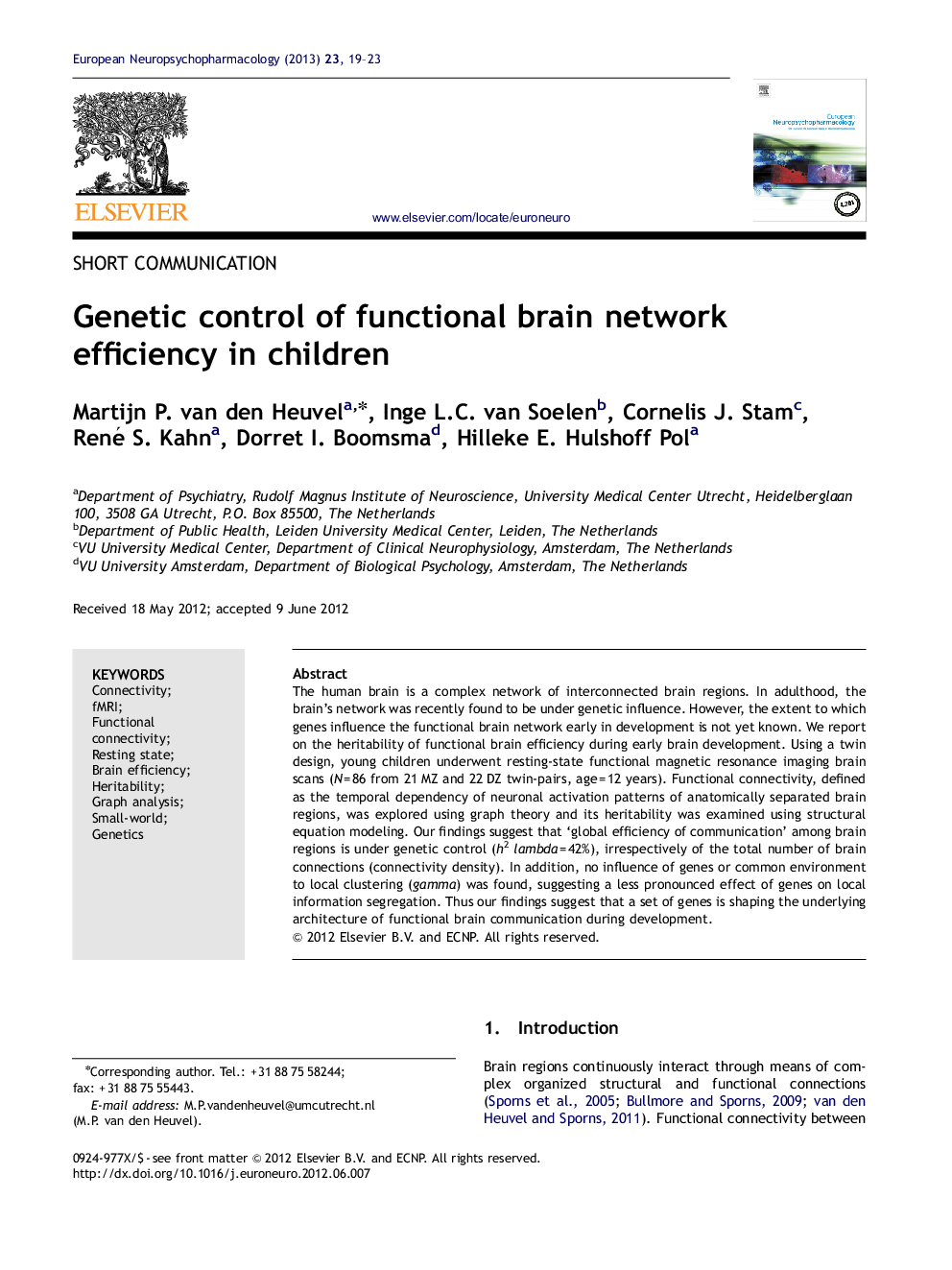| Article ID | Journal | Published Year | Pages | File Type |
|---|---|---|---|---|
| 10299277 | European Neuropsychopharmacology | 2013 | 5 Pages |
Abstract
The human brain is a complex network of interconnected brain regions. In adulthood, the brain's network was recently found to be under genetic influence. However, the extent to which genes influence the functional brain network early in development is not yet known. We report on the heritability of functional brain efficiency during early brain development. Using a twin design, young children underwent resting-state functional magnetic resonance imaging brain scans (N=86 from 21Â MZ and 22Â DZ twin-pairs, age=12 years). Functional connectivity, defined as the temporal dependency of neuronal activation patterns of anatomically separated brain regions, was explored using graph theory and its heritability was examined using structural equation modeling. Our findings suggest that 'global efficiency of communication' among brain regions is under genetic control (h2lambda=42%), irrespectively of the total number of brain connections (connectivity density). In addition, no influence of genes or common environment to local clustering (gamma) was found, suggesting a less pronounced effect of genes on local information segregation. Thus our findings suggest that a set of genes is shaping the underlying architecture of functional brain communication during development.
Keywords
Related Topics
Life Sciences
Neuroscience
Biological Psychiatry
Authors
Martijn P. van den Heuvel, Inge L.C. van Soelen, Cornelis J. Stam, René S. Kahn, Dorret I. Boomsma, Hilleke E. Hulshoff Pol,
